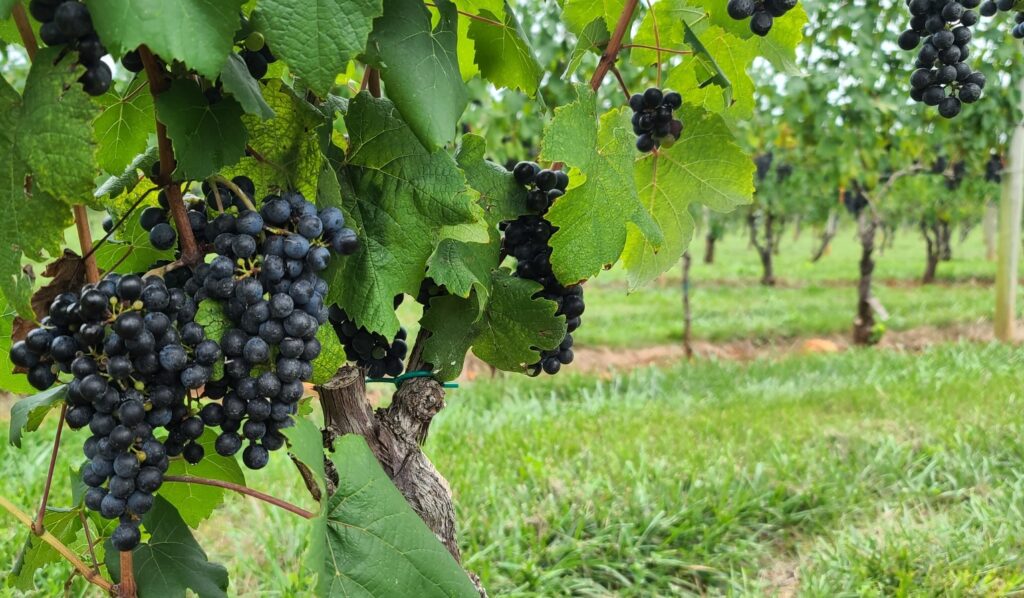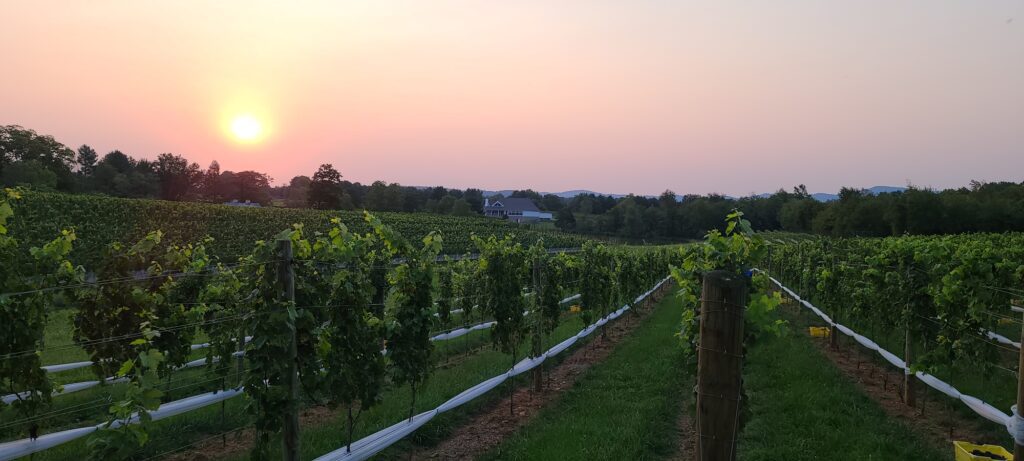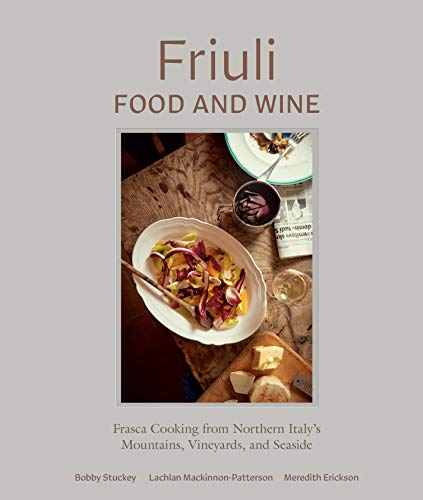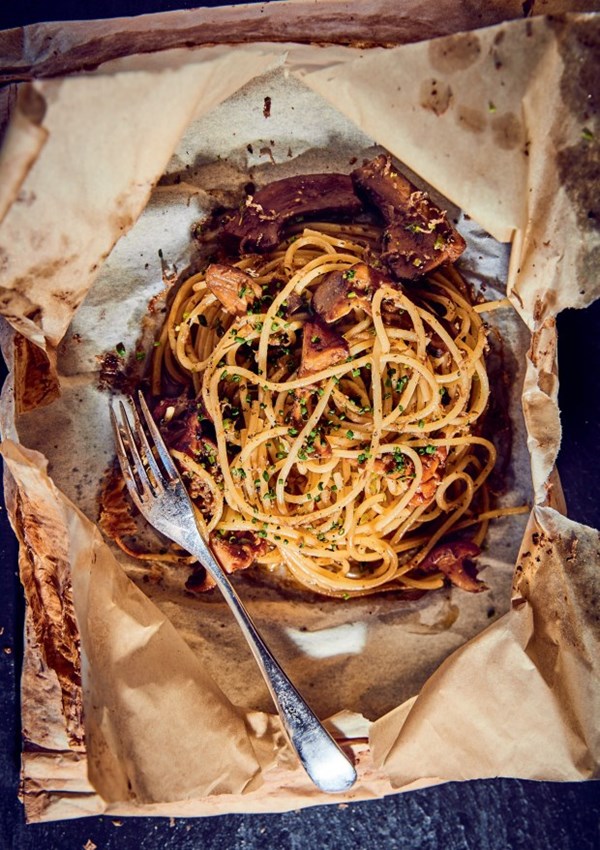The Unsung Hero of the Wine World
Photos Copyright: Interloire / Stevens Frémont, and provided by Leah Jorgensen Cellar
VinoTasting Recently Tasted Reviews: Cabernet Franc Wines

Cabernet Franc is one of my all-time favorite grape varieties, and I believe it deserves to get more recognition from the wine-drinking public. Some of the world’s most-celebrated wines would not even exist without Cabernet Franc! While that may sound like a bold statement, it is, in fact, the truth. It is not widely known, but Cabernet Franc is the parent grape of Cabernet Sauvignon, Merlot, and Carménère. Can you imagine a world of wine without those grape varieties?
Cab Franc also plays a supporting, yet vital, role in producing the great red wines of Bordeaux, Italy’s Super Tuscans, and red blends of California’s Napa Valley. It softens the harsh tannins of Cabernet Sauvignon while adding herbal aromatics to the resulting wine. And if that weren’t already enough, the Cabernet Franc grape on its own produces complex wines worthy of accolades.

The earliest records of Cabernet Franc can be found in 17th-century Bordeaux, where it was known as Bouchet and was first used to support its offspring Cabernet Sauvignon and Merlot. It came into its own when it was transplanted to Bourgeuil, located in the Loire Valley of central France, and has now found a home in nearly every major wine region of the world. Single varietal Cabernet Francs are elegant, quaffable, food-friendly wines that deserve a place on every dinner table.
This super flexible grape can thrive in diverse regions and climates. My ideal wine adventure would be a trip worldwide to discover Cabernet Franc’s varied and delicious manifestations. Starting in France, where it all began, I would visit the Loire Valley and the regions of Chinon and Bourgeuil, where the Cabernet Franc grape shines. You can enjoy a fruity, medium-bodied young Cabernet Franc wine, or you can sip on an age-worthy, fuller-bodied wine that has been kissed by oak. If you are lucky, you could then head down to Bordeaux and the famed Chateau Cheval Blanc, whose proprietary blend is made up of almost 60% Cabernet Franc, and then delight in the joys of an old glass of one of the most sought-after wines in the world.

To wrap up your European Cabernet Franc adventure, head to northeastern Italy, where Cabernet Franc is sometimes called Bordo. In this part of Italy, you can find a single varietal wine in both Friuli-Venezia-Giulia and Veneto. Then, head to Tuscany to discover how Cab Franc softens harsh tannins while adding a touch of spice when blended with Sangiovese, Cabernet Sauvignon, and Merlot. If you have the time, take a quick excursion to Southern Hungary. There you will find the regions of Villány, Szekszárd, and Eger, where winemakers have embraced Cabernet Franc, and are now using it to produce rich, powerful, and long-lived blended and single varietal wines.
Next on our global Cabernet Franc journey, we must travel to South America. The warmer temperatures in Colchagua Valley in Chile, the city of Mendoza in Argentina, and Uruguay bring forth darker fruit aromas that feature hints of dark chocolate and baking spice while maintaining their softer tannins and peppery goodness.
Heading home, I would need an entire month to discover all the regions of the United States that have taken a shine to this grape’s adaptability and versatility. This part of the journey takes us through a variety of climates in the U.S., from the hot and sunny California and cooler Washington and Oregon on the west coast, to New York State’s Finger Lakes and Long Island in the northeast, and then further down into Virginia in the south.

Wherever it is grown, Cabernet Franc will always balance its red, fruit-forward juiciness with a peppery, herbal earthiness. As the “pièce de resistance” of any North American wine adventure, try the mesmerizing Ice Wines made from frost-resistant Cabernet Franc in Canada and New York State.
With its moderate alcohol, medium body, medium to high acids, and well-integrated tannins, Cabernet Franc is a great wine to enjoy with a variety of foods. Its higher acidity allows it to play well with notoriously hard-to-pair tomato and vinegar-centric dishes. At the same time, its herbal and vegetal characteristics make it an excellent complement to gamey meats such as pheasant, lamb, wild duck, or venison. Herbal and spicy dishes are easily matched by the signature peppery aromas and herbaceous notes in the wine. And, of course, a Loire Valley goat cheese paired with a Cabernet Franc is a perfect example of the adage “what grows together, goes together.”
Leah Jorgensen Jean, founder, owner and winemaker of Leah Jorgensen Cellars in Newberg, Oregon is a big proponent of Cabernet Franc. We asked her what she loves about this grape.
“Why do I love Cabernet Franc? Let me count the ways!
Cabernet Franc has the natural acidity and tannin structure that make it the ideal grape for aging wine – it’s WHY iconic wines like 1947 Cheval Blanc stand the test of time, and then some! I love the complexity and at the same time delicate nuances of aromatics and flavors – from pencil shavings, wet pavement, pink peppercorn, black peppercorn, tarragon, cooking herbs, baking spice, brambles, cassis, lingonberry jam, Amarena cherry, cherry tobacco, cigar, Lapsang Souchong tea (black tea that is smoked over pine wood), to roses and carnations and violets! I call Cabernet Franc ‘the ultimate Cinderella grape’ because she is unequivocally the belle of the ball.”
Leah Jorgensen Jean

Bobby Stuckey, renowned Master Sommelier, restaurateur, and author notes that “Cabernet Franc came to Friuli with Napolean so it has been there a while and there are great representations.” Stuckey says the recipe for Spaghetti Con Funghi in his recent book, Friuli Food and Wine: Frasca Cooking from Northern Italy’s Mountains, Vineyards, and Seaside, would be an excellent pairing. Stucky’s recommendation is the beautiful Russiz Superiore Cabernet Franc Collio DOC 2017 from Friuli-Venezia-Giulia

SPAGHETTI CON FUNGHI AL CARTOCCIO
(Baked Spaghetti with Mushrooms in Parchment)
Reprinted from FRIULI FOOD AND WINE: Frasca Cooking from Northern Italy’s Mountains, Vineyards, and Seaside. Copyright © 2020 by Frasca Food and Wine, Inc. Photography copyright © 2020 by William Hereford. Published by Ten Speed Press, an imprint of Random House, a division of Penguin Random House LLC.
Makes 4 to 6 servings
Imagine a dish that arrives in a little parchment-wrapped package (known as a cartoccio, or cartouche) like a baked gift from the spaghetti gods. You open it up, and with the warm steam comes the scent of olive oil, parsley, white wine, and wild mushrooms. Bam! That’s this dish right here. It’s very simple to make and is also a great way to get children to eat fungi.
YOU WILL NEED
Four to six 15-inch parchment-paper squares
1 pound dry spaghetti
¼ cup olive oil
2 tablespoons unsalted butter
1 pound mixed fresh wild mushrooms, such as black trumpets or chanterelles, trimmed2 small shallots, minced
Fine sea salt
½ cup dry white wine
1 cup vegetable stock
¼ cup minced fresh flat-leaf parsley
2 tablespoons extra-virgin olive oil
Preheat the oven to 400°F.
Bring a large pot of salted water to a boil. Add the spaghetti and cook for 2 minutes short of the timing for al dente on the package.
While the pasta is cooking, in a large sauté pan over high heat, warm the olive oil and butter. Add the mushrooms and sauté until wilted, about 5 minutes. Push the mushrooms to the side of the pan, turn the heat to medium, add the shallots, and sauté until translucent, about 3 minutes, seasoning with salt as you go. Stir the mushrooms into the shallots, add the wine, and cook until it is almost completely absorbed, about 3 minutes. Pour in the vegetable stock, turn the heat to high, bring to a boil, then turn the heat to low and simmer until the cooking juices reduce slightly, about 5 minutes.
Drain the undercooked pasta and stir it into the sauce, mix in the parsley, and then stir in the extra-virgin olive oil.
On a work surface, lay out one parchment square per person. Place one portion of pasta onto the center of each square. Moisten the edges of the parchment with water and fold up into a triangle shape, crimping all along the edges to make a seal. Gently lift and transfer to a baking sheet. Repeat with the remaining squares.
Bake until the parchments puff up (from the steam inside), about 5 minutes. Use a large flat spatula to transfer each parcel to a plate.
Serve immediately, letting your dinner guests open their own cartoccio.
Despite being its parent, people often refer to Cabernet Franc as Cabernet Sauvignon’s less celebrated baby brother. I think it’s time to change that thinking and instead bring Cab Franc out of the shadow of its famous offspring and directly into the limelight. Cabernet Franc’s incredible versatility, along with its elegance, well-integrated tannins, and beautiful aromatics, should earn it a place among the great red wines of the world.



